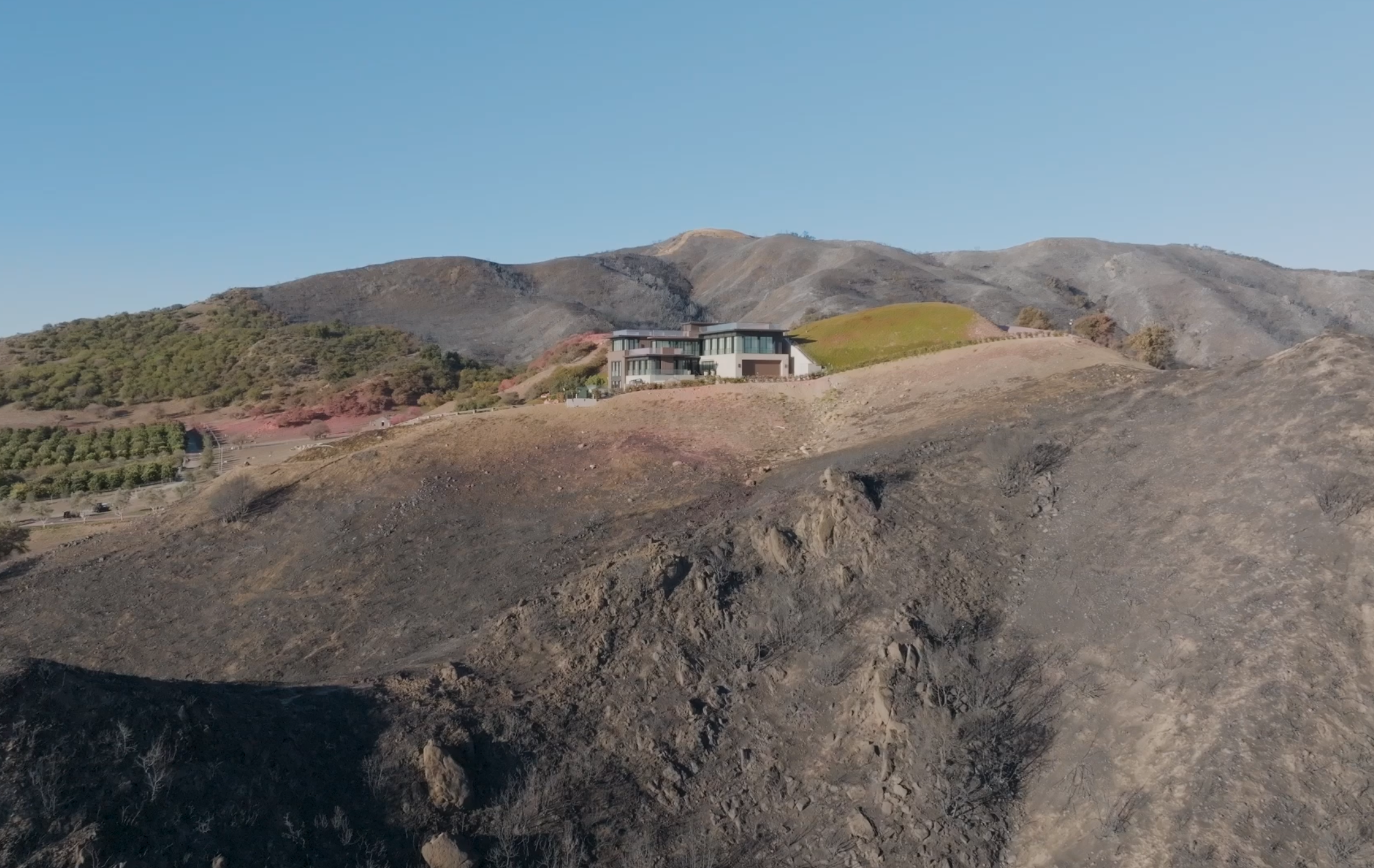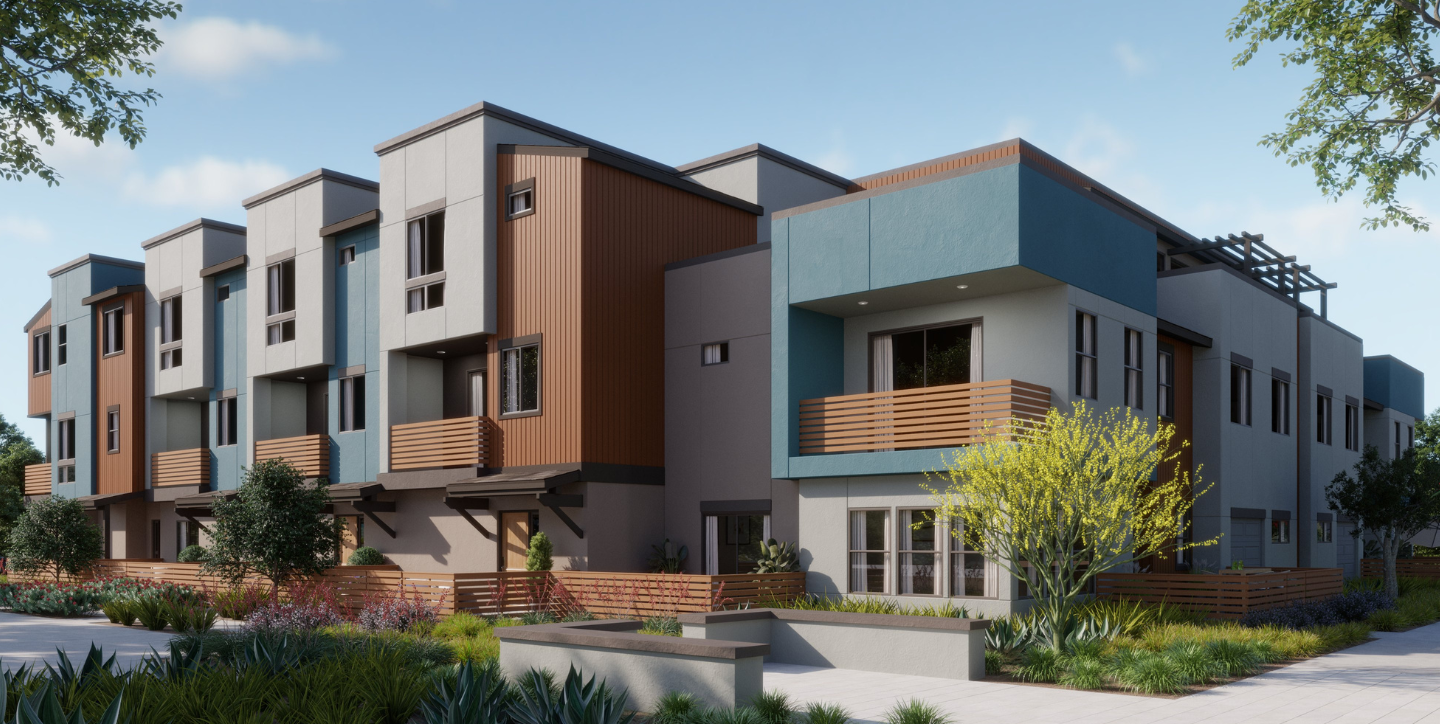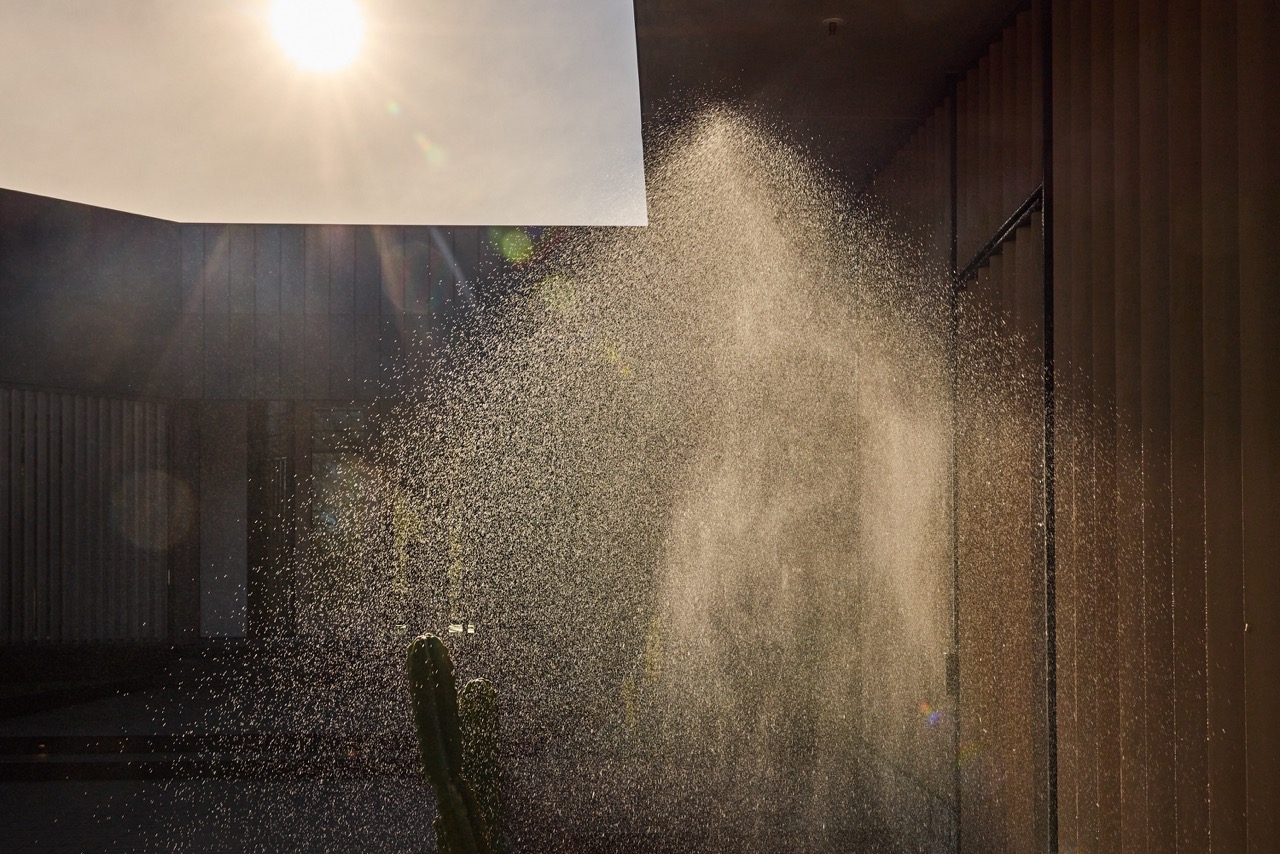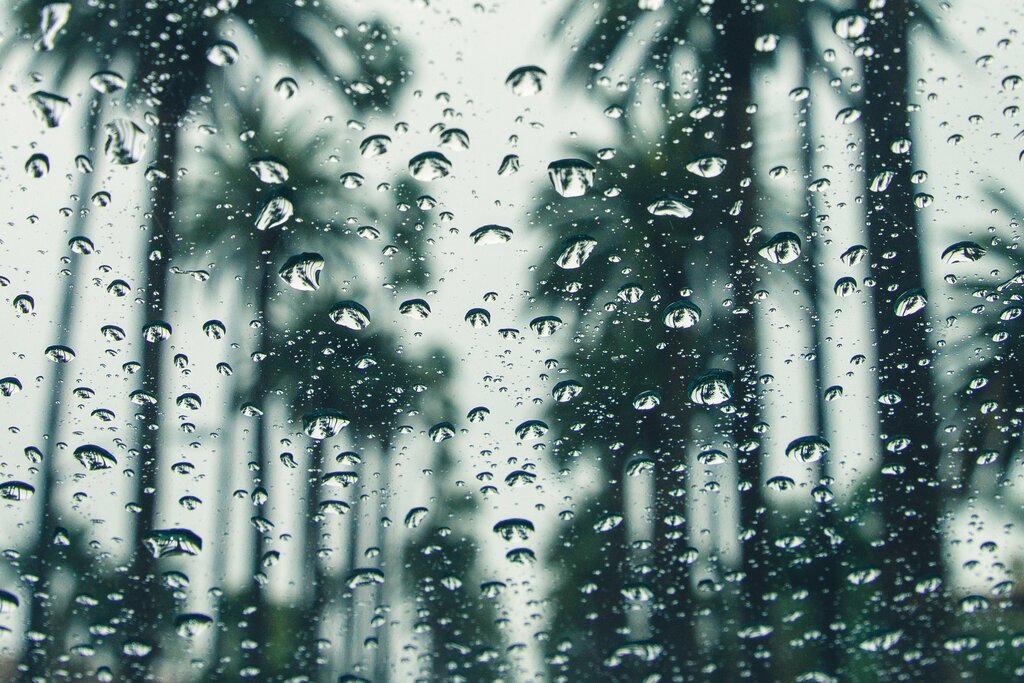
Forecasts for California fire weather zones identify when weather conditions are favorable for wildfires to start and spread. Wildfires can spark suddenly, which is why it’s important for you to know when weather conditions make them more likely.
While fire weather occurs most often during late summer and fall, fire-producing conditions can pop up during any season—especially in warmer and drier areas like southern California. Monitoring fire weather zones gives you information about local weather conditions, so that you can be more alert when the fire risk is high.
Download our free Frontline Wildfire Defense app to stay in the know, 24/7. Our app makes it easy for you to track local fires, find wildfire preparation checklists, access emergency contact groups, and more.
What does fire weather mean?
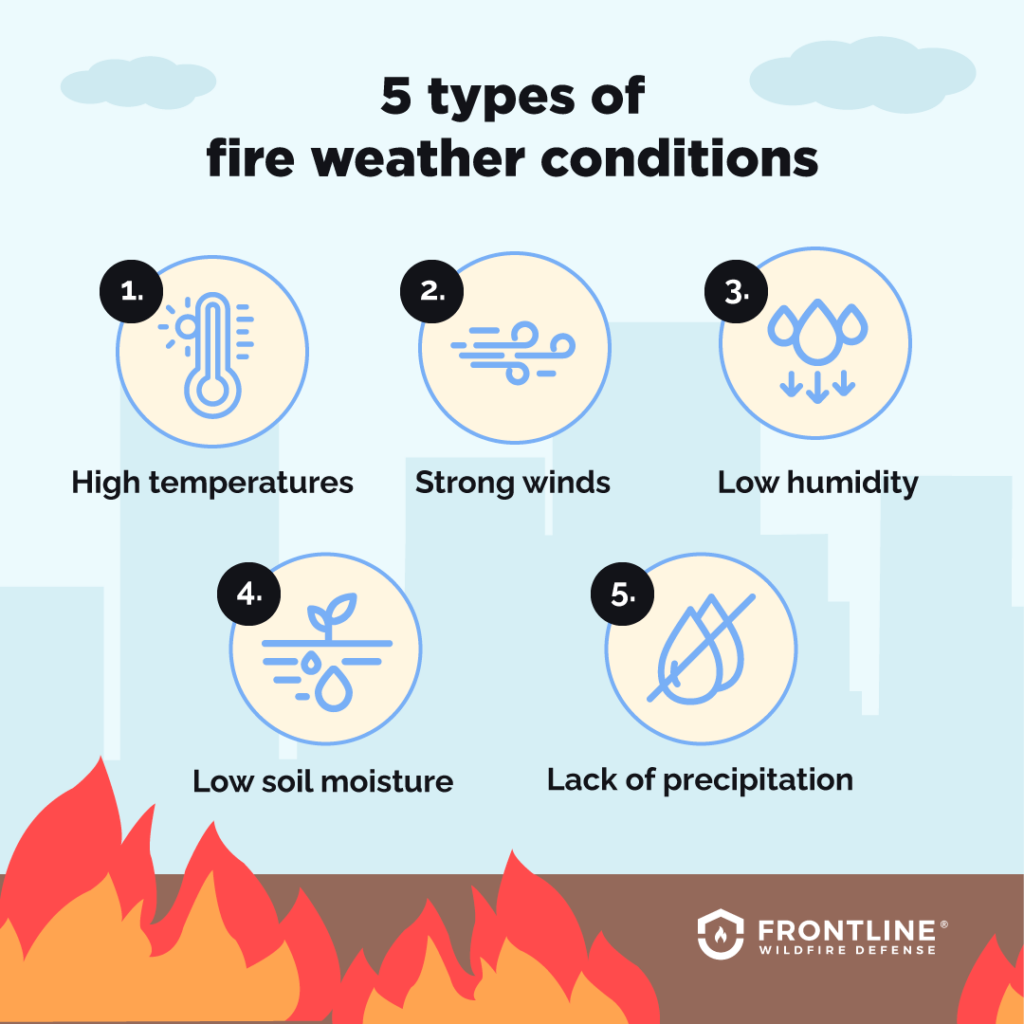
Fire weather refers to the conditions that make it easier for fires to start and spread. The live California wildfire map indicates the most at-risk areas at the moment.
What is fire weather in California? It’s when dry conditions create fuel that burns easily, which then combines with heat and plenty of oxygen. Hot, dry weather, particularly with high winds like the Santa Ana—which routinely top 40 miles per hour—is more likely to occur in the late summer and creates fire weather.
Fire weather conditions include:
- High temperatures. Heat increases water evaporation, which creates drier vegetation. Drier vegetation makes it easier for fire to start when exposed to a flame or burning ember.
- Strong winds. Winds supply wildfires with oxygen, making them grow faster. They help wildfires spread more quickly by carrying burning embers across short distances like roads.
- Low relative humidity. Relative humidity refers to how much water is in the air. Low relative humidity means that fuel sources for fires are drier, as well. Dry air also makes static electricity more likely, causing sparks that can ignite a wildfire.
- Low soil moisture. Soil moisture is a strong indicator of fuel moisture. If soil moisture is low, then local vegetation is likely also low in moisture, making it more likely to ignite when exposed to high heat.
- Lack of precipitation. Rain, snow, fog, and dew dampen vegetation, making it unlikely to ignite. When there’s a lack of precipitation, vegetation dries out and becomes a better fuel source for wildfires.
When looking at a map of fire weather zones and forecasts, pay attention to these key factors in your immediate area to know whether or not current conditions make wildfires more likely.
What is the fire weather zone forecast?
Fire weather zone forecasts differ from general weather forecasts in that they focus specifically on the conditions that increase wildfire risk. Fire weather forecasts in Fire Hazard Severity Zones (FHSZ) can help you be more aware of the current risks, and thus better able to plan and prepare in case a wildfire breaks out in your area.
The fire weather zone forecast, also called the fire weather planning forecast, is produced by the National Wildfire Coordinating Group in the National Weather Service (NWS). It identifies local weather conditions in specific locations, or zones. Each zone is typically limited to a county-sized area with a consistent climate.Refer to the Weather Forecast Office Identifier list for a map of regions and to review up-to-date weather conditions for your zone. The fire weather zone forecast typically provides a 6-10 day outlook to help you better prepare for potential future fire weather.
What fire weather zone are you in?
You might wonder what fire weather zone you’re located in. This information is vital for knowing your specific risks at any given time. You can find up-to-date fire zone maps with zone boundaries on Weather.gov.
California fire weather zone boundaries
If you’re wondering which California fire weather zone you’re in, you can find more detailed California FHSZ information in the following links:
Fire weather zone forecasts in California
A mile or two matters when it comes to wildfires. The following links connect you to weather maps and forecasts maintained by the NWS. They provide region-specific California fire weather forecast maps and information for each area:
- Eureka, CA – map, forecast
- Hanford, CA – map, forecast
- Las Vegas, NV – map, forecast
- Medford, OR – map, forecast
- Monterey, CA – map, forecast
- Oxnard, CA – map, forecast
- Phoenix, AZ – map, forecast
- Reno, NV – map, forecast
- Sacramento, CA – map, forecast
- San Diego, CA – map, forecast
What is a fire weather watch?
A fire weather watch or red flag warning is a specific notice that the NWS issues when conditions in the next 24-72 hours are prime for a wildfire starting and spreading in an area.
The NWS works with land management organizations to actively monitor area weather conditions and issue warnings if conditions make wildfires more likely. Fire weather watches give the public and local emergency services time to prepare for potential wildfires.
What’s the difference between a fire weather watch and a red flag warning?
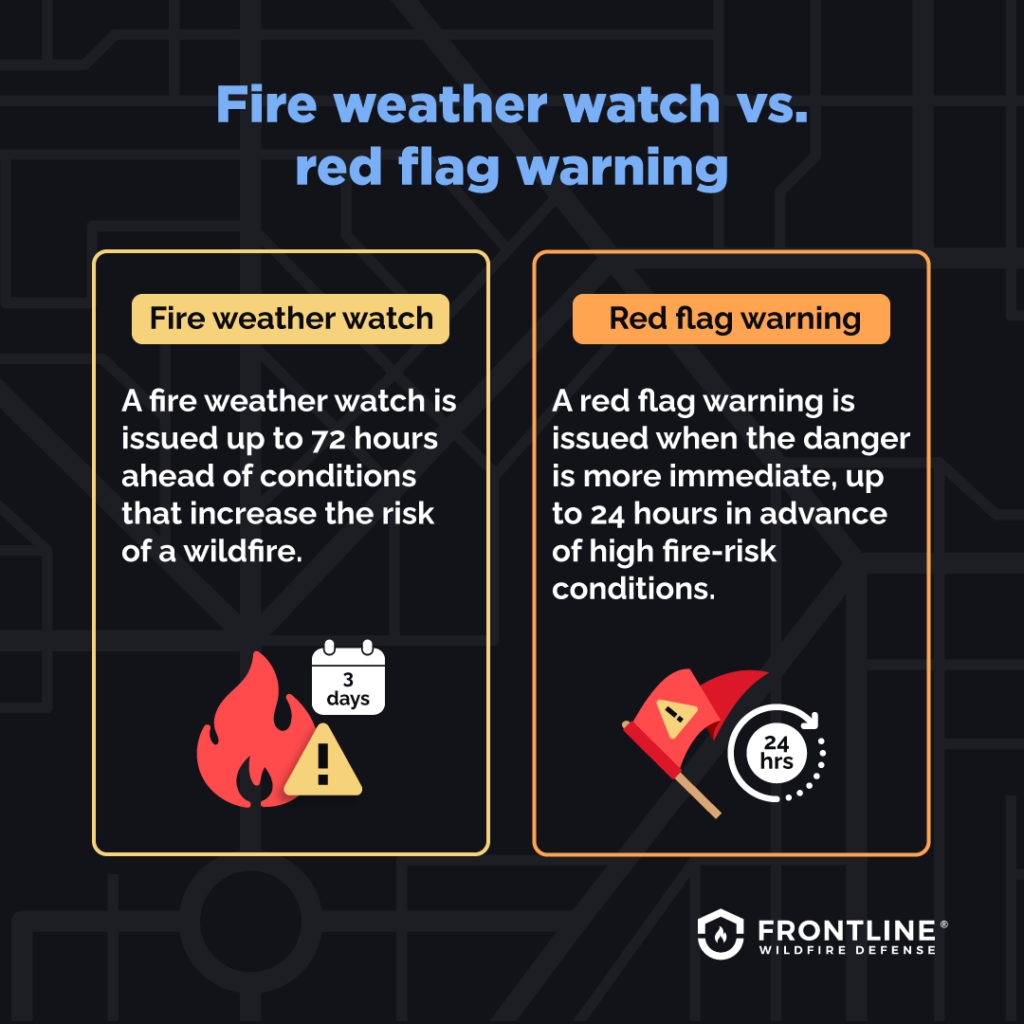
A fire weather watch is a warning issued up to 72 hours, or three days, before conditions that increase the risk of wildfire occur. When the danger is more immediate, the NWS issues a red flag warning up to 24 hours, or one day, ahead of the danger. When wildfires are at risk of starting, growing, and spreading quickly, residents need to stay alert and be ready to take action.
Fire weather watches and red flag warnings in California
When considering fire weather conditions in California, the Geographic Area Coordination Center for the state considers local influences, such as the presence of dry lightning in storms without significant rain, area topography and vegetation, specific humidity thresholds by time of day, and the presence of high winds. The center coordinates with public safety officials, relevant agencies, and energy utilities to limit certain activities, pre-position fire-fighting resources, and warn the public.
What to do when a red flag warning is issued
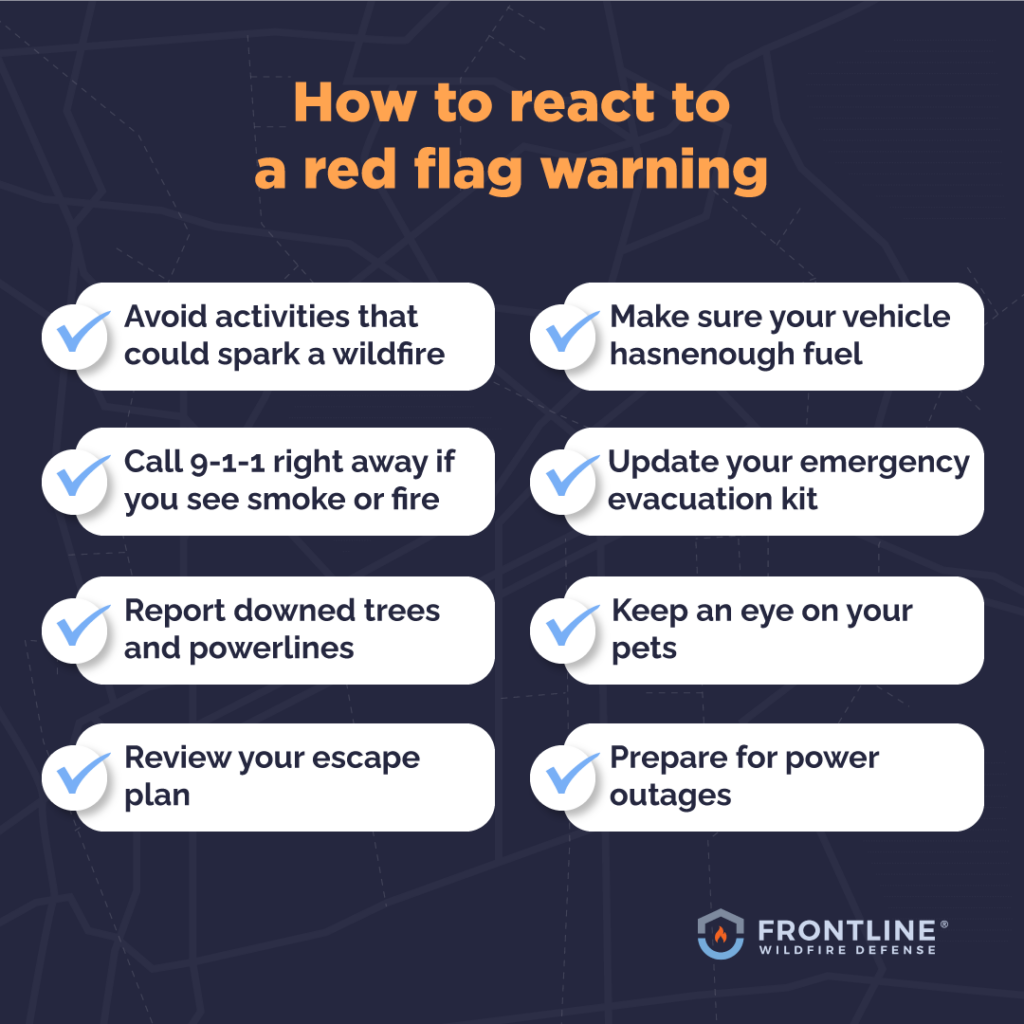
When a red flag warning is issued, you should be on high alert and actively plan for the safety of your family and the protection of your property. Here’s what to do:
- Be mindful of activities and conditions that could spark a wildfire. Avoid campfires, barbecuing, construction, and mowing your lawn.
- If you see smoke or fire, call 9-1-1 to report it right away.
- Report downed trees and powerlines.
- Review your escape plan. You should have at least two exit routes from your immediate area and from your town.
- Make sure your car has fuel, is ready to go, and that you can open your garage door even if the power is out.
- Update your emergency evacuation kit. Make sure you have vital documents, proof of residency, and any necessary medications with you.
- Keep an eye on your pets in case you need to evacuate quickly and take them with you.
- Utilities may cut power to reduce risks, so be ready to live without electricity for several days.
What are Fire Hazard Severity Zones and how are they different from fire weather zones?
Fire weather zones provide timely information about weather conditions that increase the risk of wildfires starting and spreading. FHSZ, however, are areas where the degree of probability for extremely damaging fires is regularly assessed and assigned a danger level—moderate, high, very high—regardless of the immediate weather conditions. Zone assessment includes the hazard created by physical conditions and the past 30-50 years of fire behavior in the area.
How to know which California Fire Hazard Severity Zone you’re in
In addition to tracking which California fire weather zone you’re in, you should also know which California FHSZ you’re in. Enter your address on the fire hazard map to determine your zone, then consider the available mitigation measures that make the most sense for your area.
What if your home is located in a high Fire Hazard Severity Zone?
Knowing where you stand in high fire risk zones will guide your preparations. You may be required to follow defensible space standards that create a buffer between your home and combustible materials. Building codes may require fire-resistant building materials that “harden” your home against direct flames, radiant heat, and flying embers. The zone where your home is located can also affect your ability to get wildfire insurance. The use of fire-resistant building materials and fire defense systems can help protect your home and lower your premiums.
Wildfire defense at your fingertips
Helping you understand fire weather zone forecasts is a key part of helping you deal with California wildfire risks. We are dedicated to helping you protect your property and your family, which is why we invested in creating the Frontline Wildfire Defense app.
This free tool keeps you up-to-date with fire weather information, local wildfire incidents, and much more. You can also use the app to control your home wildfire defense system and stay prepared during fire season.
The Frontline Wildfire Defense app includes several vital resources:
- Remote wildfire defense system controls
- U.S. and California Wildfire maps
- Weather condition information
- Fire danger indexes
- Wildfire event notifications
- Fire and evacuation preparation checklists
- Emergency contact groups
